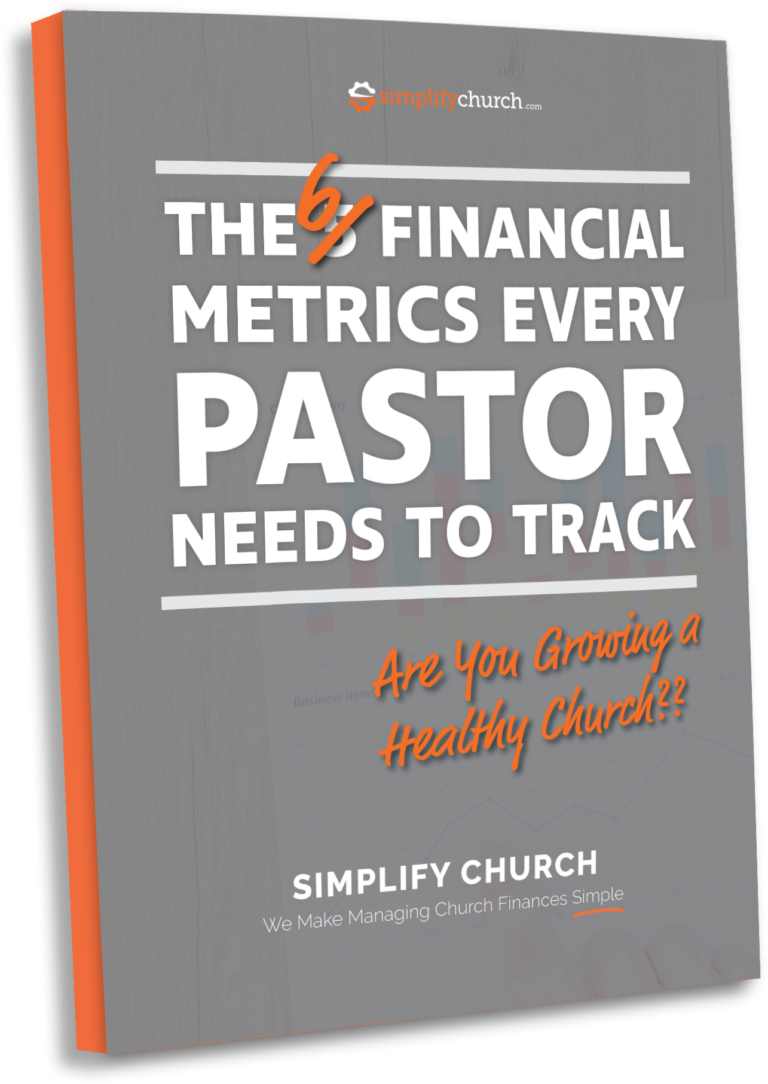In How to Help Your Church Go Digital, Part 2, we discussed the importance of keeping your congregation connected. Today we’re diving deeper into the topic of digital communication and keeping your church digitally connected in this season.
Church Communication in a Digital World
Over the last few weeks churches across the globe have been forced to rethink what it means to “do church.” And while that can be unsettling, it is also an unprecedented opportunity.
Perhaps one of the biggest blessings of this pandemic is that it happened at this moment in history. Even a decade ago, digital tools and resources would not be readily available to most churches and maintaining connection would be significantly more challenging.
From online giving platforms, to live streaming, to social and digital connection platforms, we are living at a time in history that allows us to continue to gather together as followers of Christ, to grow together and to reach out to those in need…with or without a building (and regardless of church size).
And as this season of social distancing continues, it is essential that we take time to examine how we are digitally connecting with our congregation – not just on a Sunday morning, but throughout the week.
It is essential that we take time to examine how we digitally connect with our congregation – not just on a Sunday morning, but throughout the week.
A digital communication plan will guide you both for this season and for the future of your church. So let’s dig into how you can optimize your digital church communication strategy…or get started creating one.
Start With Your Goals
Let me begin by asking, “What are your goals for this season?”
Is it to simply survive as a church until you can “return to normal?” Or is it to thrive during this season?
Because I know it is possible for your church to thrive. In fact, with a little intentionality, you may even see your church grow (even if you aren’t meeting together and don’t consider yourself a “techy person.”)
We’ve already heard from churches across the country that are continuing to engage with people during this time, that are continuing to see people come to Christ, and that are continuing to grow. We’ve heard from churches that have not seen any dip in giving, and churches whose donations have actually increased during this time.
So if you want to be a church that not only survives, but thrives, then I encourage you to keep reading. Here are some big picture goals to consider:
Connection & Engagement
If you want to be a healthy church at the end of this crisis, at the very least, you need to keep your community engaged and connected during this season. The thing that will separate churches that thrive from those that struggle will be their level of engagement during this time.
You’ll need to come up with creative ways to stay engaged with your attendees and help them feel like they really are a part of a local body of believers. We’ll talk about some ways you can do that below.
Encourage Spiritual Growth
If your baseline goal is to maintain connection & engagement, then a next-level goal is to encourage and equip your members to grow during this time.
Yes, there is an abundance of pain, loss and hardship during this season. We must acknowledge that fact. But simply because we cannot physically gather together does not mean that our mission and calling to go and make disciples has changed.
You do not need to put your efforts to equip your members on the back burner. The church has never been dependent on a building. You can help people on their spiritual journey, even in a season of turmoil.
Engage New People
Finally, consider how your church can engage with people not already connected to your congregation.
Right now more people are spending time online, more people are feeling disoriented, and more people are looking for connection, hope and meaning right now. The opportunity to engage with people who might never visit a church is extremely high. Can you be intentional about stepping into that opportunity?
Reexamine Your Systems
Once you’ve thought through your goals for this season, it’s time to look at your systems and processes. Do you need to change anything about your current systems to help move toward your goals?
Your Church Database
In this season of digital church communication, you need an up-to-date church database. If you’re like many church leaders, your database might need a little bit of work. It’s typically not high on a church priority list.
If you have the time, start going through your database to make sure it’s updated with current contact information for all of your attendees. Or if your plate is too full, ask a volunteer to help you with this project. Here are some questions you’ll need to answer:
- How many people are actually connected to/a part of your church?
- Do you have a good way to contact them?
- What percentage of your contacts can you reach through email?
- Through text message?
- Do you have current physical addresses for your members?
Consider sending out a letter in the mail to every contact in your database, or at least those you know are active members.
In this letter you can:
- Encourage & reassure people
- Ask them to update any changes to their contact info
- Reiterate how to watch services
- Explain all the ways to stay connected
- Remind them to be faithful in giving (and explain how the church is using those funds)
- Encourage them to stay connected with friends and family and invite others to watch your services online
PRO TIP: Simplify Community is a church management system (ChMS) without a learning curve. It can help you keep track of and communicate with your members and visitors. It is a cloud-based solution, so you can access your church information from anywhere. Click here for a free demo of the software.
Your Online Giving Platform
First, if you haven’t yet set up online giving for your church, it’s quick and easy to get started. Using Simplify Give’s quick, no-fee sign up process, we can have your church accepting donations online in just a few minutes.
Before COVID, churches that started accepting donations online increased overall donations by 32%. My guess is that this number is currently skyrocketing.
Second, if you already have an online giving platform, do you know what percentage of your members are currently using it?
You may need to provide some guidance to your members that are less tech-savvy and show just how easy it can be to give online via your church website or through text-to-give.
Choose Your Digital Church Communication Platforms
Now you’ll want to think through the digital platforms you use to communicate and engage with your church. Here are the most common platforms:
Your Website
These days most churches have a website of some sort. However, the capabilities of church websites tend to be all over the map, depending on whether you have a tech-savvy webmaster.
Regardless of how simple or complex your site is, there are two things every church should keep in mind:
- Your primary website visitor is someone not connected to your church. That’s why in general we recommend that your website be designed for a potential visitor.
- Your church members will often turn to your website first for updates. In this season, unless someone is actively engaged with you on social media, they will first visit your website for more info on how your church is responding during this season.
What does this mean for you?
You need to update your website and let people know how you’re doing “church” during this season. Where can they go to watch your services? Is it at the same time or a different time? Where do they need to go for more updates?
If you can stream your services from your website, fantastic! But if you’re not super techy and that feels complicated, that’s okay. Just make sure you update your site and let people know the best ways to stay in touch with you.
If you don’t regularly send out a church email newsletter, now is a great time to start! Send a quick email to your members each week and include information you might regularly put in your church bulletin. Start with a helpful tip or a devotional message and make sure to include reminders of how and when to watch your service, how to give online, and maybe a link to a replay of last week’s service.
Using email is important because it shows that you are making an effort to stay connected with everyone, especially because you will have a percentage of people who are either not on social media or are intentionally avoiding it right now. I’ve seen many churches turn to Facebook as their primary means of staying connected with people. However, if you rely on Facebook as your sole means of regular communication, you might be overlooking a good portion of your members.
I say Facebook rather than all social media because if you are going to pick one social platform, it should be Facebook.
You’ll reach smaller groups of people on other platforms, but Facebook is the most wide-reaching. It also is designed to help people engage and connect with one another.
There are so many ways to connect with your congregation through your church Facebook page and in Facebook groups.
Post frequently on your Facebook page (at least once a day) and encourage people to engage with your content. Have someone from the church leadership team go live on Facebook or upload a recorded video on a regular basis. This is a great opportunity to lead a daily devotional, to encourage connection and emotional health, and to help people learn how to grow spiritually.
Get Creative
Now for the fun part. You know your congregation best. Have a brainstorming session with your leadership team and come up with specific ideas to engage people during this season. Here are some great ideas that a number of churches are implementing:
- Offer a daily devotional or start a new church Bible reading plan together
- Go live daily on Facebook to offer encouragement and connection
- Share activities that families can do together
- Continue to have your small groups meet together on Zoom
- Ask your members to invite friends to your online services
- Host a mid-week prayer or worship service via Facebook or Zoom
- Provide specific content for kids, teens or families
- Create a family scavenger hunt and have members post pictures of their finds
- Provide a place for people to submit prayer requests and specific needs that the church can pray for
Focus Your Content on the Whole Person
It can be easy for us to silo ourselves as just providers of spiritual support and guidance, but the truth is that this crisis impacts the entire wellbeing of a person – body, mind and spirit. Think about creating content that supports people’s spiritual, mental, physical, emotional, financial and relational wellness.
There is a lot of anxiety right now. A lot of added stress. Financial strain. Relationship strain. Isolation. Grief. Fear. Loss. All of those things take a toll on people. My guess is that when this crisis blows over, the need for counseling will be higher than ever.
There is no way that you as a church leader will be able to offer individual counseling for everyone dealing with issues that stem from this crisis. But you can be proactive now by offering resources and suggestions to help them process their circumstances, feelings and emotions in healthy ways.
Think about what support you can provide during this season, such as sharing this emotional health tool from Saddleback Church.
Follow Up
If you want to use this season to engage and reach more people, you will need a digital engagement and connection plan. Check out this post for more suggestions about how to engage with and follow up with first-time viewers.
Embrace The Opportunity
I heard this statement from multiple people today, “The rules of the game have changed.” This applies to how we as people conduct business, how we socialize, and yes, how we do church.
For so long the church (at least in America) has followed a series of established norms and expectations. All of that is currently upended. This creates uncertainty, but also unprecedented opportunity.
COVID-19 has given churches across the globe a chance to demonstrate what it means to “be the church” apart from any building or set of norms and expectations. In a very short period of time, churches have radically shifted the ways in which they communicate and interact with members.
Does going back to the “way things were” really serve the mission of the church?
It’s time to give a more serious look at how digital communication tools can help the church spread the gospel in new ways. Perhaps it’s time to lean into new strategies and prayerfully consider ways in which these technologies might serve your church both for this season and beyond.
How are you engaging with your congregation in this season? What are your big wins? What are you struggling with?






